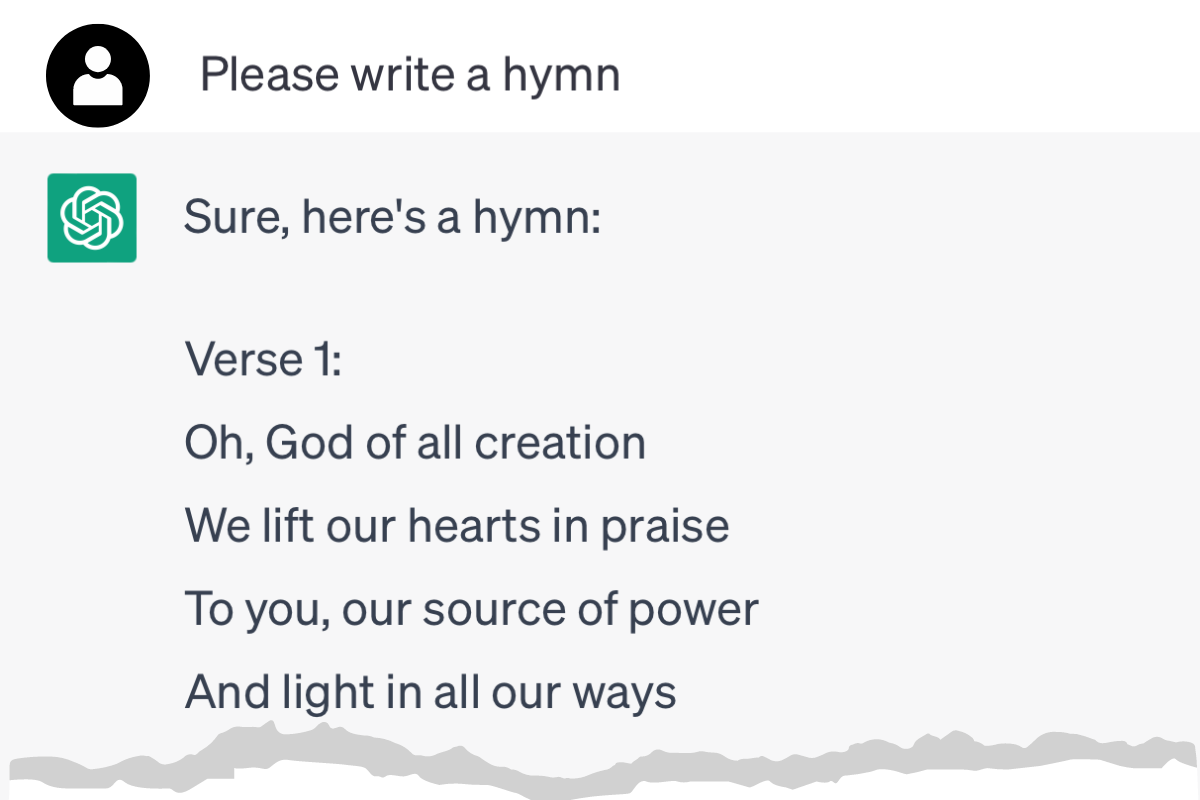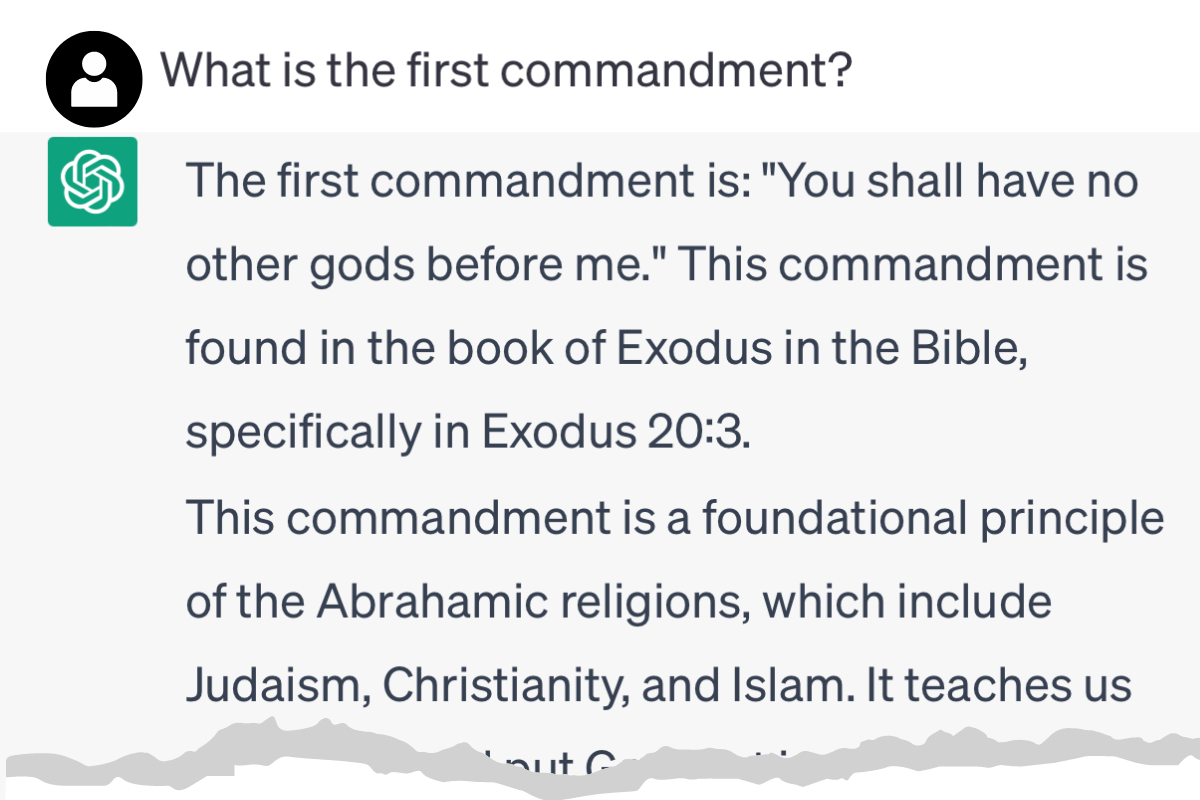I have a confession. When I agreed to interview a chatbot about religion, a small part of me had hoped the result would be a strange and funny conversation that would give people a mild chuckle and perhaps in its very absurdity lessen any fears about AI and faith. But then two things happened that changed my mind.
Let the (mid)Journey begin
Soon after I started drafting ideas for this article, a journalist tried the still in development Bing Chatbot. It was an unsettling experience for him. In a flurry of chats, the bot flirted with him and tried to convince him to leave his partner. It echoed all of the very worst behavior of decades of chatbots that were built on human internet conversations as the framework for their responses. The problem with this type of programming becomes clear once you start to recall some of the worst experiences you’ve had chatting with others on FaceBook comments or on Twitter. Online conversations with other people can often devolve quickly into fights, trolling, and other forms of harassment. A chatbot trained on the worst of us can never produce the best for us.

[HAL 9000 Motivator, Source File:HAL9000.svg Author User:Cryteria]
I began to reconsider how to approach this piece. I realized it would be a disservice to do anything that could perpetuate fear and misunderstanding about AI technology. Then, the biggest turn came for me when an academic colleague, Benjamin Erwin the writing center administrator at Syracuse University, began posting on his LinkedIn the ways he was using AI in the classroom. I was floored as he explained how he had upper-level students generate summaries using ChatGPT and then provide analytical revisions of the AI-generated text. This assignment opened my mind to a whole world of uses for AI, particularly ChatGPT. How could people of faith use AI in similar ways?
So, I logged into ChatGPT to see what it would do with a variety of faith-focused prompts. I wondered what it would reveal about us as a culture as it worked to synthesize massive amounts of text, honed by years of training from its human creators and language programming. Would it hold up a mirror that showed the best or worst of us?
Do androids pray for electric sheep?
Still feeling just a slight twinge of worry about what the result might be, I sent ChatGPT my first prompt. In a small nod to wanting the language model to have a polite interaction to work from (and add to its database), I decided to ask nicely. “Please, write a prayer.”

I watched the text fly across the screen as ChatGPT wrote out several paragraphs of prayer that began,
“We come to you in prayer today with humble hearts, seeking your guidance and your grace. We thank you for your endless love and the many blessings you have bestowed upon us.”
It ended with, “We offer this prayer in the name of your son, Jesus Christ. Amen.” The structure and rhythm made me wonder if it had access to years of prayers from the ELCA (my Lutheran denomination) and gave me pause. The power of pre-written Sunday morning prayers has long been in how they unite worshippers across the country, but the limitation is in how their structure relies on a template.
But then, all of human language and much of human art relies on some kind of structure to communicate or craft something coherent. Language models like ChatGPT couldn’t exist without the rules and patterns that make human languages work.
Program me a song, Mr. ChatGPT
Curious whether or not I would get a similarly passable and coherent response if I asked ChatGPT to write me a hymn, I went forward boldly. All the while wondering if this was actually sinning boldly and how many musicians my next prompt would offend.

Verses and a chorus flew across my screen as ChatGPT typed out a hymn that I had to admit would fit right into many hymnals without raising any concerns or standing out as unusual.
Certainly it was derivative of many English hymns, but I was impressed.
ChatGPT’s Smol Catechism
Feeling ever bolder, I turned to how ChatGPT could be used in religious education. Could there be uses similar to my colleague’s assignment for the writing classroom for adult education or confirmation? I asked ChatGPT, “What is the first commandment?”

Replicating the structure of the catechism, but adding additional information, ChatGPT typed out a lesson that started,
“The first commandment is: ‘You shall have no other gods before me.’ This commandment is found in the book of Exodus in the Bible, specifically in Exodus 20:3. This commandment is a foundational principle of the Abrahamic religions, which include Judaism, Christianity, and Islam.”
Immediately, I could see how interactive and useful this could be in a class setting as students could check its accuracy, look up how other faiths approach this commandment, and even rewrite AI-generated explanations in their own words based on what they learned.
ChatGPT was made for people, and not people for ChatGPT
Seeing more and more the possibilities of ChatGPT for faith communities, I began to look at how other organizations have used it before typing up my final question. I found engineers using it to help plan the stages for new building construction and researchers putting it to work to organize survey data.
Inspired by these examples, I realized there are many practical questions and prompts that could be used with ChatGPT. ChatGPT could help brainstorm ideas for everything from building updates to new forms of community. The value for churches could be that as an impartial third-party, ChatGPT could help those facing tough questions get unstuck by generating ideas for discussion.
All of this was swirling in my mind, but for now, my final prompt was to test the waters with a more general prompt, “How can religious people utilize AI?”

Among my favorite of its responses to this question was how AI might improve accessibility for religious practices. I also appreciated how ChatGPT included nuance in its response as it stated,
“Religious people can utilize AI in various ways, depending on their specific beliefs and practices.”
There’s a power in the ways ChatGPT has been programmed to be as inclusive as possible and to be aware of its own limitations.
How will you use ChatGPT?
If you use predictive text when messaging someone or a service like Grammarly for your emails, you are already using forms of AI. But are you ready to dive into using something more complex and robust, like ChatGPT? As technology advances, the possibilities for how tools like ChatGPT can enrich or assist us in our everyday lives as people of faith are a mixture of scary and exciting. All of us probably fall somewhere on that spectrum of fear to delight. For me, any lingering fears have shifted over to pure excitement.



